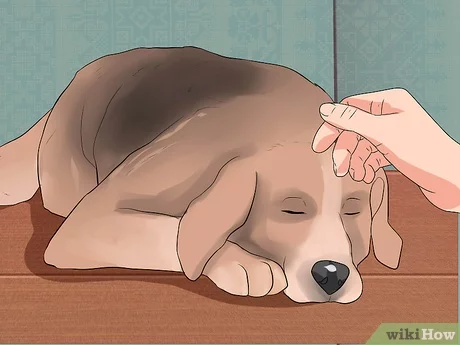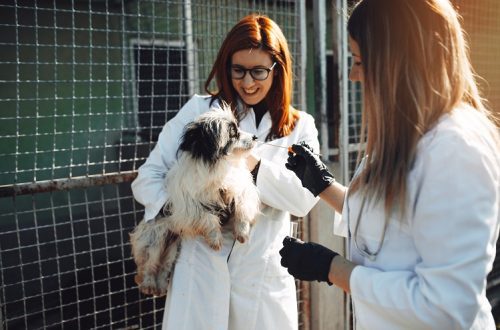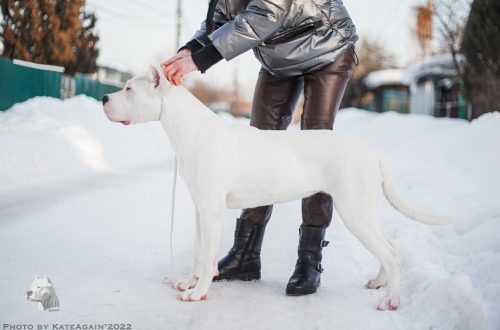
Hiccups in a dog. What to do?

Hiccups in dogs are a spasm of the intercostal muscles. In the process of hiccups, nerve impulses pass from the vagus nerve in the diaphragm to the brain and back, causing the pectoral muscles to contract. The respiratory center loses control over them, which leads to the impossibility of a full breath, because due to muscle contraction, the glottis located between the vocal cords closes and prevents oxygen from completely entering the lungs. This produces a characteristic hiccup sound.
In most cases, hiccups are not life threatening and are not a sign of a serious illness, but it’s best to know the causes of “safe” and “dangerous” hiccups.
safe hiccups
The process of hiccups is a kind of vicious circle: tense muscles irritate the vagus nerve, and it, in turn, causes them to contract even more, so the causes of hiccups are always associated with overexertion:
Hiccups while lying still for a long time (for example, if the dog is sleeping) can occur from an uncomfortable body position in which the internal organs press on the diaphragm;
Also, hiccups can be caused by hypothermia, as in the cold the muscles tense up to keep warm;
Fear or extreme excitement can also lead to hiccups for the same reason as hypothermia. Interestingly, a sleeping dog may begin to hiccup because of a nightmare;
One of the most common forms of hiccups – hiccups after eating – is associated with irritation of the walls of the esophagus and stomach. The dog may eat too much or eat too quickly without chewing, or the pieces may be too large and uncomfortable. In addition, animals switching to dry food can experience similar problems, especially at an early age;
Pregnant dogs often hiccup due to an increase in the volume of the uterus and organ pressure on the vagus nerve.
What to do?
In order to defeat hiccups, it is necessary to change the rhythm of breathing and remove the tension of the diaphragm:
Hiccups from prolonged lying can be relieved by a change in posture and physical activity (light jogging, playing with a ball, walking on hind legs with front legs raised).
From hypothermia, intensive movements and any other way to increase body temperature (wrap in a blanket, use a heating pad, hugs) will help.
Hiccups from a stressful situation are removed by eliminating the cause: wake the dog if it is sleeping; take to a safe quiet place if people, sharp sounds, animals became the cause of fear. Try to calm the hiccupping pet with an affectionate, calm voice and gentle strokes.
Hiccups after eating can be eliminated by giving your dog warm water to drink and massaging his stomach. This is especially helpful for puppies. Mom-dog licks the bellies of her cubs from birth to remove any discomfort. Over time, this function can be performed by a person.
Ordinary “episodic” hiccups should resolve within a few minutes of the onset or initiation of rescue procedures. If this does not happen or the hiccups in the dog appear constantly, you should consult a doctor.
dangerous hiccups
Prolonged hiccups may indicate problems with the respiratory, digestive, cardiovascular and central nervous systems:
In pneumonia and bronchitis, the chest organs can affect the vagus nerve, causing prolonged hiccups;
With a stomach ulcer, pancreatitis, gastritis, various intestinal diseases, the mucosa of the gastrointestinal tract becomes inflamed and in some cases irritates the vagus nerve;
With myocardial infarction, along with other symptoms, hiccups can begin, which is important to know, given that dogs have a higher pain threshold than humans – they may not pay attention to pain for a long time;
With brain injuries, stroke, inflammation in the central nervous system, the nerves die, disrupting the transmission of impulses, which can knock down the vagus nerve and cause hiccups;
With severe intoxication, hiccups arise from exposure to hazardous substances on the body. Poisoning can occur with severe renal failure, improper medication, poisoning with the waste products of microorganisms during infection.
What to do?
Prolonged hiccups can only be cured with medication and only after a thorough examination by a specialist. It is not an independent disease, but along with other pronounced symptoms, it speaks of problems in the dog’s body that need to be addressed immediately.
10 May 2018
Updated: July 6, 2018





